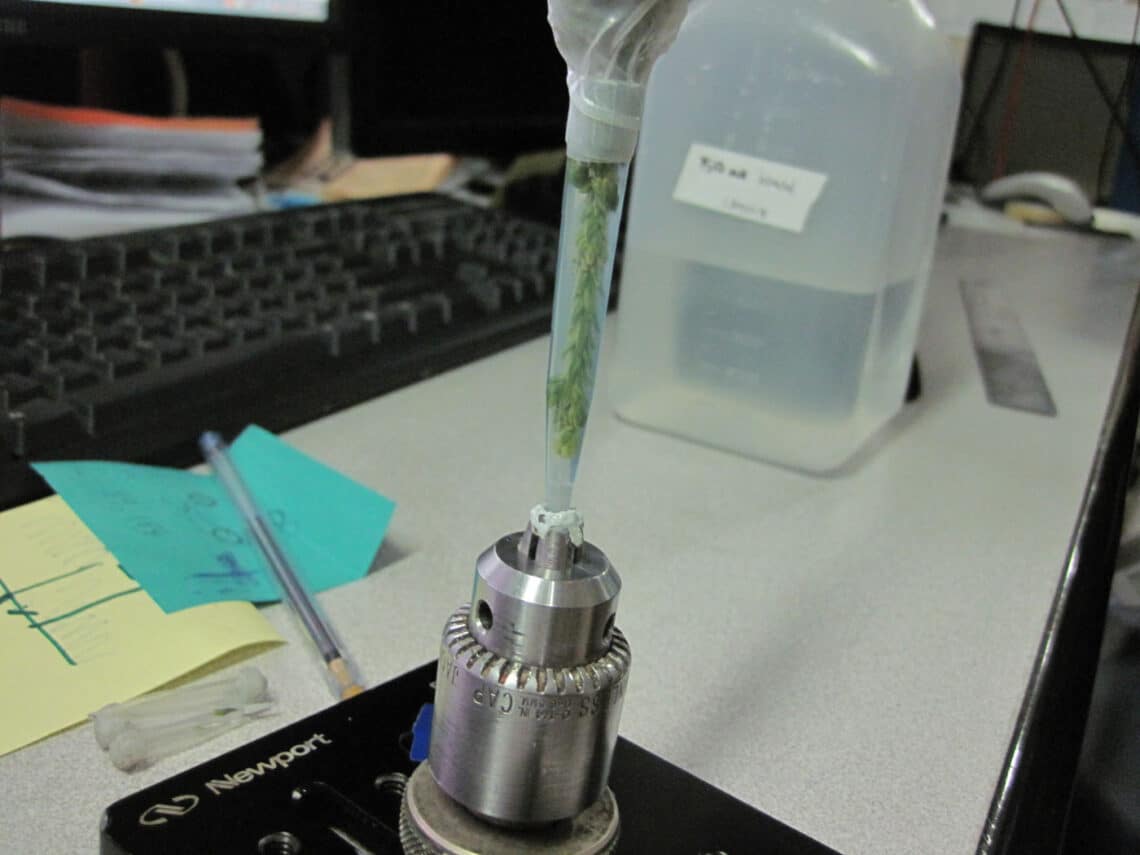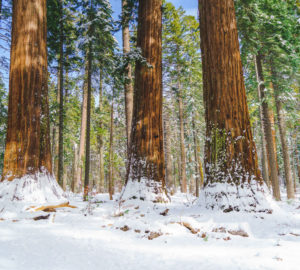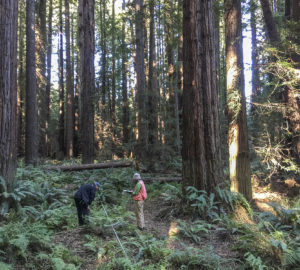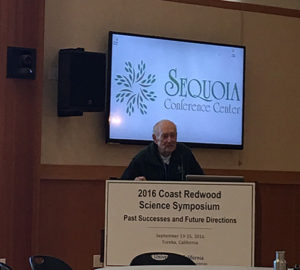Leaves maintain water reserves where needed, coordinating with a tall ‘orchestra’

The Eureka Symphony in fall 2021 played a “re-emergence” show, their first show in over a year. The show was fitting, as we all slowly re-emerged from the pandemic. It was my first time going to the symphony, and I was moved to tears. The words “stomatal conductance” remind me of the orchestra that night. Musical sections balance one another: The drums fill out the strings, the horn section comes in hot. It’s all regulated by the woman in front dressed in black sequins, passionately and expertly waving her baton.
In a 2022 study published in the scientific journal Plant, Cell & Environment, researchers describe a process in redwood leaves as closely integrated as a symphony. But unlike human conductors, leaves do not always know what is coming next. On the surface of leaf or stem are stomata, the pores allowing movement of gases in and out of the intercellular spaces. Fluctuations in light, temperature, and transpiration—the exhalation of water vapor through the stomata—can happen rapidly. The leaves deeper in redwood crowns appreciate cool, dark, and wet microclimates, happy to let the higher leaves do more photosynthesizing. But when a sunfleck, a shaft of sunlight that penetrates deep into the canopy, suddenly increases the leaves’ evaporative demand, the leaves might start to panic: Cue the high-pitched, rapid strings!
The water column in the xylem, the tissue that delivers water, is under tension. When a sunfleck heats up a leaf in the deep crown, the increased evaporative demand increases tension because there is suddenly more “pull” on the water column.
Researchers at Cal Poly Humboldt and the University of California, Davis, mimicked these conditions on redwood leaves in the lab, and found that water-storing cells called transfusion tracheids will buckle to release just enough water to allow stomata time to close, preventing air bubbles that would block water flow. Unlike the woman waving her baton, stomata can’t close quickly; it takes them about 400 seconds on average. Dr. Alana Chin, lead author of the study, explains, “We calculated how much time the water released would buy leaves to close stomata under a realistic water-stress emergency, which of course is different at different crown positions. Turns out that transfusion tracheids are almost perfectly tuned to release just the right amount of water to protect leaves given climatic variation and leaf transpiration rates throughout the crown.” The pace of this process is like the second movement in a symphony, low and lyrical.
The research team found that the shady part of redwood canopies, where light and temperature are most variable, have the most capacity for this balance of water and tension. “It’s really a beautiful emergency backup system,” says Chin. The researchers also observed that water uptake across leaf surfaces fully restored the buckled tracheids, suggesting that trees may use aerial water for cell recovery. “Buckling only works if it’s reversible,” Chin says.
So it seems that redwoods are conducting their own symphony of resilience, with a pattern of maintaining water reserves where needed, and coordinating with the entirety of its massive height to optimize performance.
Learn more in the journal article, “Tracheid buckling buys time, foliar water uptake pays it back: Coordination of leaf structure and function in tall redwood trees,” in Plant, Cell & Environment by Alana R. O. Chin, Paula Guzmán-Delgado, Stephen C. Sillett, Lucy P. Kerhoulas, Anthony R. Ambrose, Andrew R. McElrone, and Maciej A. Zwieniecki





